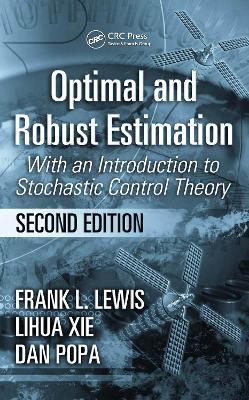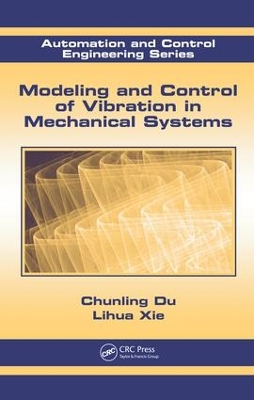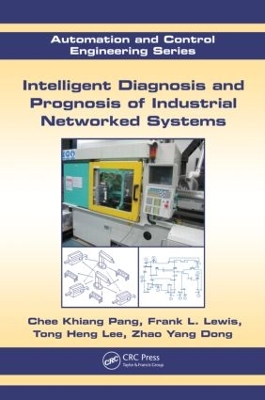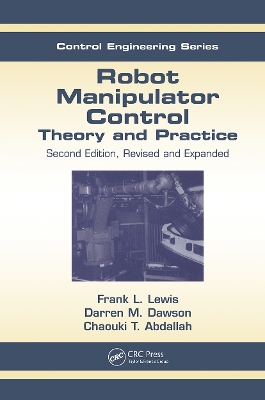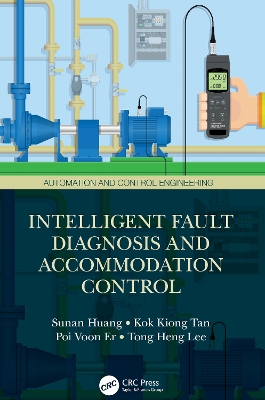Automation and Control Engineering
1 primary work • 5 total works
Book 26
More than a decade ago, world-renowned control systems authority Frank L. Lewis introduced what would become a standard textbook on estimation, under the title Optimal Estimation, used in top universities throughout the world. The time has come for a new edition of this classic text, and Lewis enlisted the aid of two accomplished experts to bring the book completely up to date with the estimation methods driving today's high-performance systems.
A Classic Revisited
Optimal and Robust Estimation: With an Introduction to Stochastic Control Theory, Second Edition reflects new developments in estimation theory and design techniques. As the title suggests, the major feature of this edition is the inclusion of robust methods. Three new chapters cover the robust Kalman filter, H-infinity filtering, and H-infinity filtering of discrete-time systems.
Modern Tools for Tomorrow's Engineers
This text overflows with examples that highlight practical applications of the theory and concepts. Design algorithms appear conveniently in tables, allowing students quick reference, easy implementation into software, and intuitive comparisons for selecting the best algorithm for a given application. In addition, downloadable MATLAB® code allows students to gain hands-on experience with industry-standard software tools for a wide variety of applications.
This cutting-edge and highly interactive text makes teaching, and learning, estimation methods easier and more modern than ever.
Modeling and Control of Vibration in Mechanical Systems
by Chunling Du and Lihua Xie
From the ox carts and pottery wheels the spacecrafts and disk drives, efficiency and quality has always been dependent on the engineer's ability to anticipate and control the effects of vibration. And while progress in negating the noise, wear, and inefficiency caused by vibration has been made, more is needed.
Modeling and Control of Vibration in Mechanical Systems answers the essential needs of practitioners in systems and control with the most comprehensive resource available on the subject.
Written as a reference for those working in high precision systems, this uniquely accessible volume:
- Differentiates between kinds of vibration and their various characteristics and effects
- Offers a close-up look at mechanical actuation systems that are achieving remarkably high precision positioning performance
- Includes techniques for rejecting vibrations of different frequency ranges
- Covers the theoretical developments and principles of control design with detail elaborate enough that readers will be able to apply the techniques with the help of MATLAB (R)
- Details a wealth of practical working examples as well as a number of simulation and experimental results with comprehensive evaluations
The modern world's ever-growing spectra of sophisticated engineering systems such as hard disk drives, aeronautic systems, and manufacturing systems have little tolerance for unanticipated vibration of even the slightest magnitude. Accordingly, vibration control continues to draw intensive focus from top control engineers and modelers. This resource demonstrates the remarkable results of that focus to date, and most importantly gives today's researchers the technology that they need to build upon into the future.
Chunling Du is currently researching modeling and advanced servo control of hard disk drives at the Data Storage Institute in Singapore. Lihua Xie is the Director of the Centre for Intelligent Machines and a professor at Nanyang Technological University in Singapore.
Intelligent Diagnosis and Prognosis of Industrial Networked Systems
by Chee Khiang Pang, Frank L. Lewis, Tong Heng Lee, and Zhao Yang Dong
In an era of intense competition where plant operating efficiencies must be maximized, downtime due to machinery failure has become more costly. To cut operating costs and increase revenues, industries have an urgent need to predict fault progression and remaining lifespan of industrial machines, processes, and systems. An engineer who mounts an acoustic sensor onto a spindle motor wants to know when the ball bearings will wear out without having to halt the ongoing milling processes. A scientist working on sensor networks wants to know which sensors are redundant and can be pruned off to save operational and computational overheads. These scenarios illustrate a need for new and unified perspectives in system analysis and design for engineering applications.
Intelligent Diagnosis and Prognosis of Industrial Networked Systems proposes linear mathematical tool sets that can be applied to realistic engineering systems. The book offers an overview of the fundamentals of vectors, matrices, and linear systems theory required for intelligent diagnosis and prognosis of industrial networked systems. Building on this theory, it then develops automated mathematical machineries and formal decision software tools for real-world applications.
The book includes portable tool sets for many industrial applications, including:
- Forecasting machine tool wear in industrial cutting machines
- Reduction of sensors and features for industrial fault detection and isolation (FDI)
- Identification of critical resonant modes in mechatronic systems for system design of R&D
- Probabilistic small-signal stability in large-scale interconnected power systems
- Discrete event command and control for military applications
The book also proposes future directions for intelligent diagnosis and prognosis in energy-efficient manufacturing, life cycle assessment, and systems of systems architecture. Written in a concise and accessible style, it presents tools that are mathematically rigorous but not involved. Bridging academia, research, and industry, this reference supplies the know-how for engineers and managers making decisions about equipment maintenance, as well as researchers and students in the field.
Robot Manipulator Control
by Frank L. Lewis, Darren M. Dawson, and Chaouki T Abdallah
Robot Manipulator Control offers a complete survey of control systems for serial-link robot arms and acknowledges how robotic device performance hinges upon a well-developed control system. Containing over 750 essential equations, this thoroughly up-to-date Second Edition, the book explicates theoretical and mathematical requisites for controls design and summarizes current techniques in computer simulation and implementation of controllers. It also addresses procedures and issues in computed-torque, robust, adaptive, neural network, and force control. New chapters relay practical information on commercial robot manipulators and devices and cutting-edge methods in neural network control.
Intelligent Fault Diagnosis and Accommodation Control
by Sunan Huang, Kok Kiong Tan, Poi Voon Er, and Tong Heng Lee
Control systems include many components, such as transducers, sensors, actuators and mechanical parts. These components are required to be operated under some specific conditions. However, due to prolonged operations or harsh operating environment, the properties of these devices may degrade to an unacceptable level, causing more regular fault occurrences. It is therefore necessary to diagnose faults and provide the fault-accommodation control which compensates for the fault of the component by substituting a configuration of redundant elements so that the system continues to operate satisfactorily.
In this book, we present a result of several years of work in the area of fault diagnosis and fault-accommodation control. It aims at information estimate methods when faults occur. The book uses the model built from the plant or process, to detect and isolate failures, in contrast to traditional hardware or statistical technologies dealing with failures. It presents model-based learning and design technologies for fault detection, isolation and identification as well as fault-tolerant control. These models are also used to analyse the fault detectability and isolability conditions and discuss the stability of the closed-loop system. It is intended to report new technologies in the area of fault diagnosis, covering fault analysis and control strategies of design for various applications. The book addresses four main schemes: modelling of actuator or sensor faults; fault detection and isolation; fault identification, and fault reconfiguration (accommodation) control. It also covers application issues in the monitoring control of actuators, providing several interesting case studies for more application-oriented readers.
